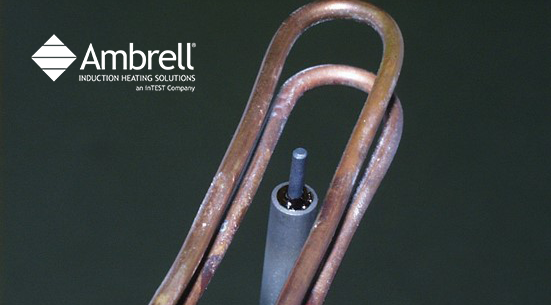Induction Brazing an Aluminum Assembly
Objective A company wanted to assess using induction heating for their aluminum assembly brazing process, and contacted THE LAB at Ambrell to utilize...
Applications
Applications: More
Applications: More

Industries:
Industries: More
Industries: More
Industries: More

Products:
Products: More
Services:
Services: More

Learn:
Learn: More
About:


THE LAB at Ambrell tested an application that involved heat sealing both ends of a stainless-steel heater assembly to 300-500 ºF (149-260 ºC) to melt glass preforms. THE LAB determined that an Ambrell EASYHEATTM 2 kW induction heating system with a two-turn elongated helical coil would be the right solution for this melting application.
The two-turn elongated helical coil was used to heat 5 to 7 stainless steel rods simultaneously for 60 seconds. The glass preforms melted and created a hermetic seal. After the first end was heated, the parts were repositioned to heat the opposite end. The frequency on the EASYHEAT was set to 212 kHz.
Melting with Ambrell induction heating offers several benefits. Hands free heating is possible, which leads to repeatability and doesn't require operator skill. Induction is also rapid and a comparatively clean heating method. The amount of glass was precisely controlled by the glass preforms and the even flow of glass created an aesthetically pleasing bond. Finally, there's an even distribution of heat that lends itself to consistency.
If you have an application that could benefit from induction heating, learn more about our free applications testing, including our Remote Lab Service. With Remote Lab Service, you can view testing live in our laboratory from the comfort and convenience of your office. 

Objective A company wanted to assess using induction heating for their aluminum assembly brazing process, and contacted THE LAB at Ambrell to utilize...

Induction heating is a process that uses electromagnetic fields to heat electrically conductive materials. It has been used in numerous industries...

Induction heating, a process that uses electromagnetic induction to heat electrically conductive materials, is often thought of for large industrial...